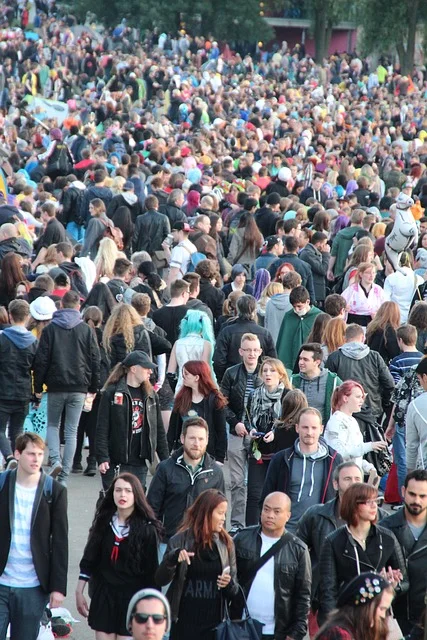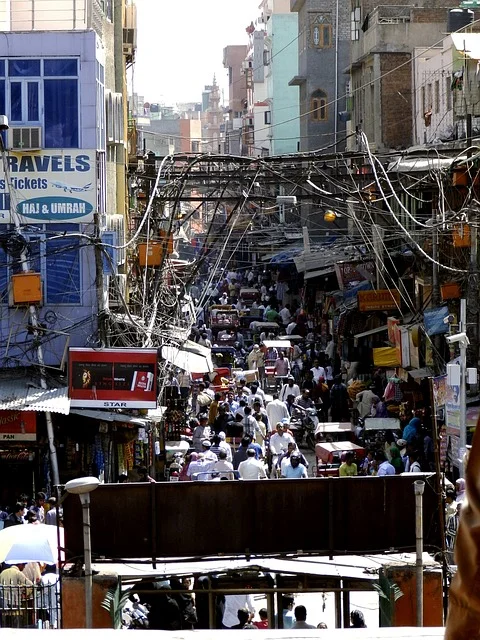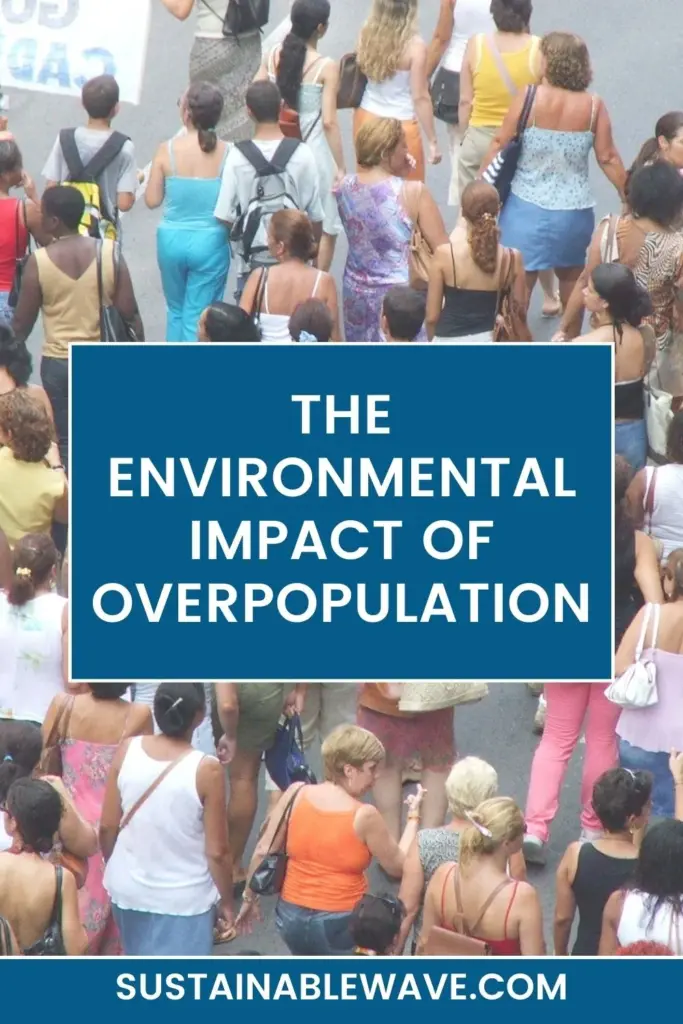Overpopulation, a term that often rings alarm bells in the minds of environmentalists, policymakers, and citizens alike, refers to a situation where the number of people exceeds the carrying capacity of a region. This imbalance between population and resources has far-reaching environmental implications.
The environmental impact of overpopulation encompasses resource depletion, increased pollution, habitat destruction, and accelerated climate change. As the global population surges, the strain on natural resources intensifies, leading to deforestation, biodiversity loss, and heightened greenhouse gas emissions, challenging the planet’s sustainability and balance.
Let’s dive deep into understanding these impacts and how they shape our world.
The Environmental Impact of Overpopulation

Overpopulation isn’t just about crowded cities or limited resources; it’s about the ripple effect it creates on our environment.
From the air we breathe to the water we drink, overpopulation touches every facet of our lives.
The Primary Causes of Overpopulation
Overpopulation, often depicted by bustling cities and overcrowded public spaces, is not a phenomenon that has emerged overnight. It’s the result of a series of events and decisions that have unfolded over centuries.
The primary causes of overpopulation include declining mortality rates due to medical advancements, sustained high birth rates, and urban migration driven by the allure of better opportunities and amenities in cities.
Let’s delve deeper into the primary causes:
- Population Growth Trends: The last century has witnessed a remarkable decline in mortality rates, thanks to medical breakthroughs and improved living conditions. Diseases that once claimed millions of lives are now preventable or treatable. While this is a commendable achievement, it has also led to an exponential growth in the global population. The birth rate, in many regions, has remained high, while the death rate has plummeted, creating an imbalance.
- Urbanization and Migration: The allure of cities, with their promises of better job opportunities, education, and amenities, has drawn people from rural areas in droves. This massive migration to urban centers, often termed as ‘urban sprawl’, has led to cities expanding beyond their means. While urbanization in itself isn’t bad, unplanned and unchecked urban growth can strain resources and infrastructure.
Natural Resource Depletion
The Earth, our home, offers a bounty of natural resources.
But with the surge in global population, these resources are being consumed at an unsustainable rate.
- Water Scarcity: Freshwater, a vital resource for survival, is under threat. With more people to cater to, there’s an increased demand for water for drinking, sanitation, and agriculture. Over-extraction from rivers and groundwater sources has led to dropping water tables. In many regions, this has resulted in dry wells and rivers, affecting both human populations and wildlife.
- Deforestation: Forests, often termed the ‘lungs of our planet’, are being cleared at an alarming rate to make way for housing, agriculture, and industries. This not only disrupts the carbon cycle but also leads to soil erosion and loss of habitat for countless species.
A Loss of Biodiversity

Biodiversity, the variety of life on Earth, is our planet’s most valuable asset. It ensures ecosystem resilience, giving ecological communities the scope to withstand disturbances.
However, overpopulation poses a grave threat to this diversity.
- Extinction of Species: As human settlements expand, they encroach upon wild areas, leading to habitat destruction. Many species, unable to adapt to these rapid changes, are pushed to the brink of extinction. The loss of even a single species can disrupt an ecosystem, leading to unforeseen consequences.
- Habitat Destruction: Forests, wetlands, and grasslands are being transformed to cater to the growing human population. These habitats, once teeming with life, are now being replaced by concrete jungles or agricultural lands. This not only results in the loss of species but also affects the services these ecosystems provide, such as clean air, water, and pollination.
Pollution and Waste
As the global population continues its upward trajectory, the amount of waste we produce and the pollutants we release into the environment have reached staggering levels.
This has profound implications for both our planet and our health.
- Air and Water Pollution: The sheer number of people has led to an increase in vehicles, industries, and daily human activities, all of which contribute to pollution. Emissions from cars and factories release harmful pollutants into the air, leading to respiratory diseases and environmental degradation. Similarly, untreated sewage, industrial effluents, and agricultural runoff pollute our water sources, making them unsafe for consumption and harming aquatic life.
- Landfills and Waste Management: With the rise in consumerism, the amount of waste we generate has skyrocketed. Cities around the world grapple with overflowing landfills, and waste management has become a significant concern. Improper disposal of waste not only contaminates the soil but also releases methane, a potent greenhouse gas.
Climate Change
Perhaps one of the most pressing issues of our time, climate change, is intrinsically linked to overpopulation.
- Greenhouse Gas Emissions: The more people there are, the more resources they consume, and the more waste they produce. This has led to an increase in greenhouse gas emissions, primarily carbon dioxide from burning fossil fuels and methane from agriculture and waste. These gases trap heat in the Earth’s atmosphere, leading to global warming.
- Rising Sea Levels: As global temperatures rise, polar ice caps and glaciers are melting at an unprecedented rate. This has resulted in rising sea levels, which threaten coastal cities and island nations. The loss of land to the sea has already displaced communities, and this trend is set to continue if corrective measures aren’t taken.
Food and Agriculture
Feeding the ever-growing global population is a challenge that has significant environmental implications.
- Land Degradation: To meet the food demands of the global populace, vast tracts of land are being converted to farmland. Intensive farming practices, while increasing yield, often lead to soil erosion, loss of fertility, and long-term land degradation.
- Overfishing: The world’s oceans aren’t immune to the effects of overpopulation. Increased demand for seafood has led to overfishing, depleting fish stocks at a rate faster than they can replenish. This not only threatens the livelihood of communities dependent on fishing but also disrupts the marine food chain.
Social Impacts
Overpopulation doesn’t just affect the environment; it has profound social implications as well.
- Economic Strains: A burgeoning population puts a strain on a country’s resources and infrastructure. This can lead to unemployment, increased competition for jobs, and, in some cases, economic stagnation. As resources become scarcer, the cost of living can rise, pushing many into poverty.
- Health and Well-being: Overcrowded cities, with their limited resources and infrastructure, often face challenges in providing adequate healthcare and sanitation facilities. This can lead to the spread of diseases. Additionally, the mental toll of living in densely populated areas, with the associated noise, pollution, and stress, can’t be overlooked.
Solutions and Mitigation
While the challenges posed by overpopulation are daunting, they are not insurmountable.
With collective effort, foresight, and innovative thinking, we can mitigate its impacts and pave the way for a sustainable future.
- Family Planning Initiatives: One of the most effective ways to address overpopulation is through family planning. By providing communities with access to contraception and education about reproductive health, we can empower individuals to make informed choices about family size. This not only helps in controlling population growth but also improves the overall health and well-being of families.
- Sustainable Development: Embracing sustainable practices across sectors is crucial. In agriculture, this means adopting methods that increase yield without degrading the land. In urban planning, it involves creating green spaces, promoting public transport, and ensuring efficient waste management. Industries can adopt cleaner technologies to reduce pollution. By prioritizing sustainability, we can ensure that development meets the needs of the present without compromising the ability of future generations to meet their own needs.
- Education and Awareness: Educating the masses about the impacts of overpopulation and the importance of sustainability can drive behavioral change. When people are informed, they are more likely to make choices that are beneficial for the environment and society at large.
- Technological Innovations: Technology has the potential to offer solutions to some of the challenges posed by overpopulation. From water purification systems that provide clean drinking water to renewable energy sources that reduce our dependence on fossil fuels, technological advancements can play a pivotal role in mitigating the impacts of overpopulation.
Key Takeaways From The Environmental Impact of Overpopulation

Overpopulation, with its myriad challenges, is a testament to the indomitable human spirit’s ability to adapt and thrive.
And with that, It is our responsibility to ensure that our growth does not come at the expense of the environment and future generations.
By adopting sustainable practices, investing in education, and leveraging technology, we can chart a course toward a balanced and harmonious coexistence with nature.
The journey ahead is long and fraught with challenges, but with collective effort and determination, a sustainable future is within reach.
I’m Thomas, the owner of SustainableWave. Passionately promoting a sustainable planet. With experience in various eco-roles, I’ll share green tips, sustainability hacks, and personal eco-journeys on my blog.






